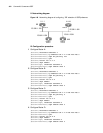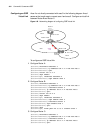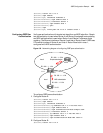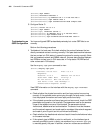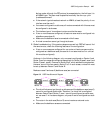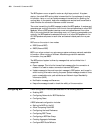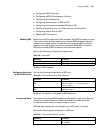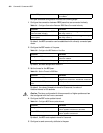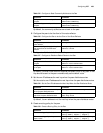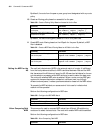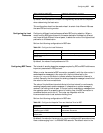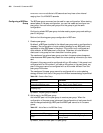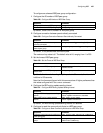
450 CHAPTER 30: CONFIGURING BGP
The BGP system runs on a specific router as a high layer protocol. At system
startup, the whole BGP routing table is transmitted for the exchange of routing
information. Later on, only an update message is transmitted for updating the
routing table. In the system, keep-alive messages are received and transmitted to
check whether the connection between routers is normal.
The router transmitting the BGP message is called the BGP speaker. It receives and
generates new routing information from time to time and advertises to other BGP
speakers. When a BGP speaker receives a new route advertisement from other
ASs, if this route is better than the existing route, or if there is no acceptable route
currently, the BGP speaker broadcasts this route to all other BGP speakers in the
AS. BGP speakers are peers to each other and several related peers form a peer
group.
BGP runs on the router in two modes:
■ IBGP (Internal BGP)
■ EBGP (External BGP)
IBGP is run when routers in an autonomous system exchange network reachable
information. When routers of different ASs exchange network reachable
information, they use EBGP.
The BGP protocol system is driven by messages that can be divided into 4
categories:
■ Open message. This is the first transmitted message after the connection is
created. It is used to create a connection between BGP peers
■ Update message is the most important message in BGP system, and is used to
switch routing information among the peers. Update message consists of three
parts: unreachable route, path attributes and Network Layer Reachability
Information (NLRI).
■ Notification message notifies errors.
■ Keep-alive message is used to check the validity of the connection.
Configuring BGP A BGP configuration includes tasks described in the following sections:
■ Enabling BGP
■ Configuring Networks for BGP Distribution
■ Configuring Peers
A BGP advanced configuration includes:
■ Setting the MED for the AS
■ Allow Comparing Path MED
■ Configuring the Local Preference
■ Configuring BGP Timers
■ Configuring a BGP Peer Group
■ Creating Aggregate Addresses
■ Configure BGP Route Reflector



